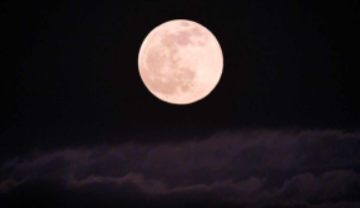This is the sturgeon supermoon, which you will be able to observe at the beginning of this month. And if you happen to miss the first one, keep an eye out for the second supermoon, which will arrive right at the end of August (but don’t worry, they won’t be the last of this year. There will still be others that we’ll tell you about later).
The sturgeon supermoon
Named after the Algonquin Native American tribe, the name has to do with sturgeons, fish that are most easily caught in the Great Lakes and other bodies of water during this time of year, according to The Old Farmers Almanac.
This supermoon, which is the first of four consecutive supermoons this year, will be on August 1 and will appear in the sky at about 2:32 pm (Miami time). And of course, you will understand that during the day it is very difficult to see the moon in its maximum splendor, but once the sun sets, look southeast “just 30 minutes” later to see the sturgeon moonrise, as recommended by NASA. .
And in case you cannot see the supermoon on the night of this August 1 due to cloudy skies or weather conditions, don’t worry, you will be able to see it a little more in the coming days.
“As the Moon rises later and later each night, the bright part illuminated by the Sun appears to get smaller or ‘wasted,’ what we call the waning gibbous moon,” NASA says of the moon’s phase during the first moon. part of august. “About a week later, on August 8, we only see half of the Moon illuminated.”
super blue moon
August’s next supermoon will appear in the sky on August 30, peaking in the sky at 9:36 p.m., according to The Old Farmer’s Almanac.
Although the name of this supermoon could make us imagine a blue glow in the night sky, the truth is that this will not happen.
“Of course, blue moons are not blue in color, but refer to the second full moon of each month,” says NASA.
The reason is that since the Moon takes 29.5 days to complete its cycle from full to new to full again, “most months there will only be one” full moon, according to NASA. “But once in a while, two fit in a month, hence the phrase ‘once in a blue moon.'”
In fact, according to NASA, the super blue moon occurs once every three years, so the next one will be in 2026.
When will there be more supermoons this year?
The Old Farmer’s Almanac states that this year will feature four other supermoons, one in each month:
- September 29th: full harvest moon
- October 28: Hunter’s Full Moon
- November 27: beaver full moon
- December 26: cold full moon


